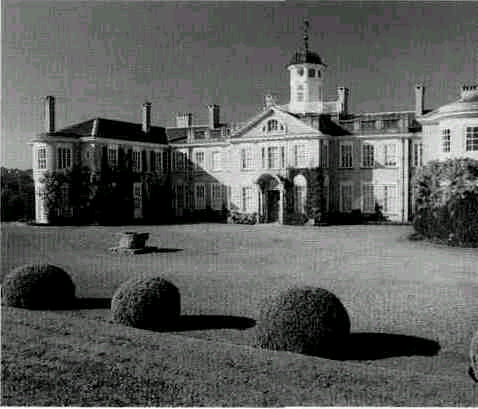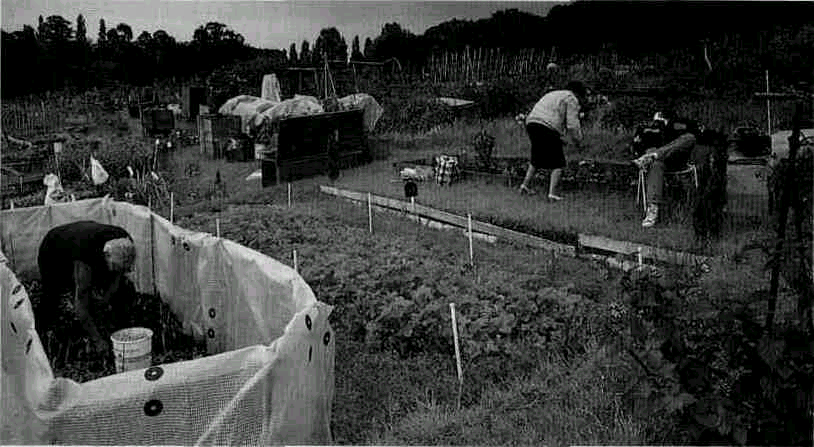
- •20 Food and drink 184
- •21 Sport and competition 191
- •23 Holidays and special 208 occasions
- •Introduction
- •10 I Country and people
- •12 I Country and people
- •14 I Country and People
- •2 History
- •16 2 History
- •18 2 History
- •It was in this period that Parliament began its gradual evolution into the democratic body which it is today. The word 'parliament',
- •20 2 History
- •22 2 History
- •24 2 History
- •26 2 History
- •28 2 History
- •30 2 History
- •32 3 Geography Climate
- •It was in Britain that the word 'smog' was first used (to describe a
- •36 3 Geography
- •38 3 Geography
- •40 3 Geography
- •Part of Snowdonia National Park
- •4 Identity
- •44 4 Identity
- •IrroubleatLllangybi
- •46 4 Identity
- •48 4 Identity
- •50 4 Identity
- •52 4 Identity
- •54. 4 Identity
- •5 Attitudes
- •58 5 Attitudes
- •60 5 Attitudes
- •62 5 Attitudes
- •64 5 Attitudes
- •66 5 Attitudes
- •In the history of British comedy,
- •6 Political life
- •68 6 Political life
- •70 6 Political life
- •72 6 Political life
- •74 6 Political life
- •6 Political life
- •78 7 The monarchy
- •The reality
- •84 8 The government
- •86 8 The government
- •88 8 The government
- •In comparison with the people of
- •9 Parliament
- •92 9 Parliament
- •94 9 Parliament
- •96 9 Parliament
- •100 10 Elections
- •102 10 Elections
- •104 10 Elections
- •I've messed up my life
- •Serb shelling halts un airlift
- •2 January is also a public holiday in
- •Identity 42—55
- •Illustrations by:
60 5 Attitudes
>
How far? How big? How much?
Distances on road signs in
Britain are shown in miles, not kilometres, and people talk about
yards, not metres. If you described yourself as being 163 tall and
weighing 67 kilos a British person would not be able to imagine
what you looked like. You would have to say you were 'five foot
four' {s
ffiet and 4 inches tall) and weighed 'ten stone seven' or 'ten and
a half stone' (i o stone and 7 pounds). British people think in
pounds and ounces when buying their cheese, in pints when buying
their milk and in gallons when buying their petrol. Americans also
use this non-metric system of weights and measures.
Imperial Metric
1 inch 2. 54.
centimetres
12 inches (1 foot) 30.48
centimetres
3 feet (1 yard) 0.92
metres
1760 yards (i mile) 1.6
kilometres
1 ounce 28.35
grams
16 ounces (1 pound) 0.456
kilograms
14 pounds (1 stone) 6.38
kilograms
1 pint 0.58
litres 2
pints (1 quart) 1. 16 litres
8
pints (1 gallon) 4.64 litres
provokes warnings from
British bus builders about 'the end of the double-decker bus as we
know it'. The British public is always ready to listen to such
predictions of doom.
Systems of measurement are another example. The British government
has been trying for years and years to promote the metric system
and to get British people to use the same scales that are used
nearly everywhere else in the world. But it has had only limited
success. British manufacturers are obliged to give the weight of
their tins and packets in kilos and grams. But everybody in Britain
still shops in pounds and ounces (see chapter 15). The weather
forecasters on the television use the Celsius scale of temperature.
But nearly everybody still thinks in Fahrenheit (see chapter 3).
British people continue to measure distances, amounts of liquid and
themselves using scales of measurement that are not used anywhere
else in Europe (> How far? How big? How much?). Even the use of
the 24-hour clock is comparatively restricted.
British governments sometimes seem to promote this pride in being
different. In 1993 the managers of a pub in Slough (west of London)
started selling glasses of beer which they called 'swifts' (25 cl)
and 'larges' (50 cl), smaller amounts than the traditional British
equivalents of half a pint and a pint. You might think that the
authorities would have been pleased at this voluntary effort to
adopt European habits. But they were not. British law demands that
draught beer be sold in pints and half-pints only. The pub was
fined £3, 100 by a court and was ordered to stop selling the
'continental' measures. British governments have so far resisted
pressure from business people to adopt Central European Time,
remaining stubbornly one hour behind, and they continue to start
their financial year not, as other countries do, at the beginning
of the calendar year but at the beginning of April! The
love of nature Most
of the British live in towns and cities. But they have an idealized
vision of the countryside. To the British, the countryside has
almost none of the negative associations which it has in some
countries, such as poor facilities, lack of educational
opportunities, unemployment and poverty. To them, the
countryside means peace and quiet, beauty, good health and no
crime. Most of them would live in a country village if they thought
that they could find a way of earning a living there. Ideally, this
village would consist of thatched cottages (see chapter 19) built
around an area of grass known as a 'village green'. Nearby, there
would be a pond with ducks on it. Nowadays such a village is not
actually very common, but it is a stereotypical picture that is
well-known to the British. Some
history connected with the building of the Channel tunnel (see
chapter 17) provides an instructive example of the British
The love of nature 61
attitude. While the
'chunnel' was being built, there were also plans to build new
high-speed rail links on either side of it. But what route would
these new railway lines take? On the French side of the channel,
communities battled with each other to get the new line built
through their towns. It would be good for local business. But on
the English side, the opposite occurred. Nobody wanted the rail
link near them! Communities battled with each other to get the new
line built somewhere else. Never mind about business, they wanted
to preserve their peace and quiet. Perhaps
this love of the countryside is another aspect of British
conservatism. The countryside represents stability. Those who live
in towns and cities take an active interest in country matters and
the British regard it as both a right and a privilege to be able to
go 'into the country' whenever they want to. Large areas of the
country are official 'national parks' where almost no building is
allowed. There is an organization to which thousands of
enthusiastic country walkers belong, the Ramblers' Association. It
is in constant battle with landowners to keep open the public
'rights of way' across their lands. Maps can be bought which mark,
in great detail, the routes of all the public footpaths in the
country. Walkers often stay at youth hostels. The Youth Hostels
Association is a charity whose aim is 'to help all, especially
young people of limited means, to a greater knowledge, love and
care of the countryside'. Their hostels are cheap and rather
self-consciously bare and simple. There are more than 300 of them
around the country, most of them in the middle of nowhere! Even
if they cannot get into the countryside, many British people still
spend a lot of their time with 'nature'. They grow plants.
Gardening is one of the most popular hobbies in the country.
Even those unlucky people who do not have a garden can participate.
Each local authority owns several areas of land which it rents very
cheaply to these people in small parcels. On these 'allotments',
people grow mainly vegetables.
>
The National Trust
A notable indication of the
British reverence for both the countryside and the past is the
strength of the National Trust. This is an officially recognized
charity whose aim is to preserve as much of Britain's countryside
and as many of its historic buildings as possible by acquiring them
'for the nation'. With more than one-and-a-half million members, it
is the largest conservation organization in the world. It is
actually the third largest landowner in Britain (after the Crown
and the Forestry Commission). It owns more than 500 miles of the
coastline. The importance of its work has been supported by
several laws, among which is one which does not allow even the
government to take over any of its land without the approval of
Parliament.

Polesden Lacey, built
in the 182os and now owned by the National Trust

Allotments in London
